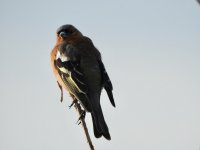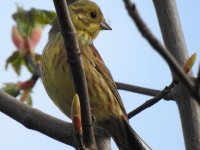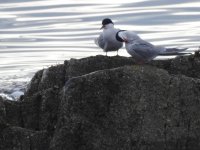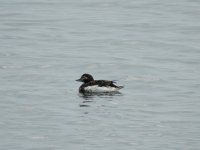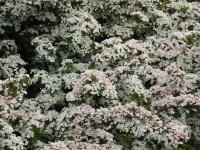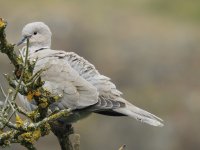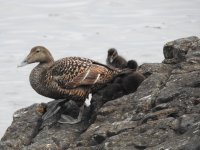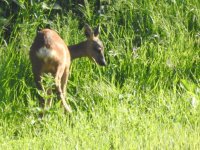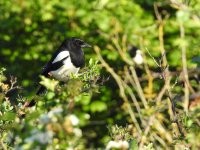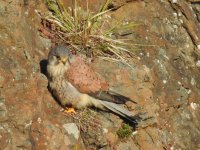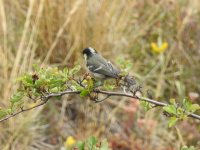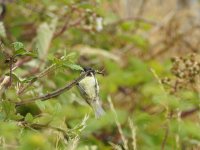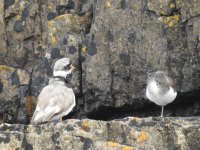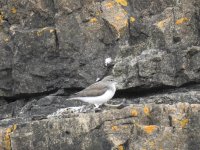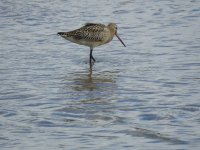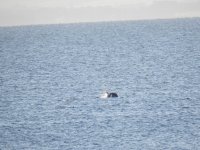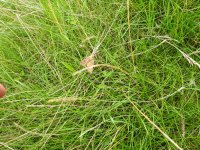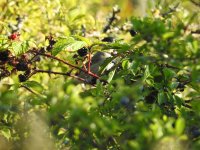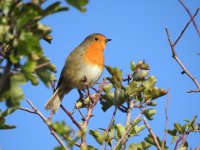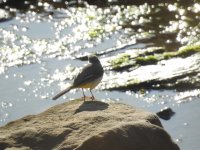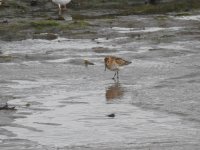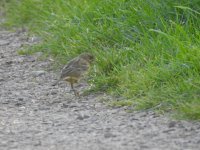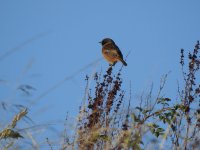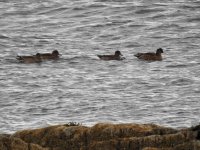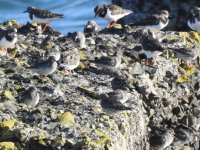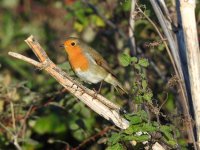7th May
I took a last tour of the strip before I head off to work for the next few weeks. The summer birds continue to increase, especially Sedge Warblers. Many of the birds are busy nest building (see Yellowhammer Photo), and pairing up. A pair of Bullfinch were found on the edge of Bullfinch Cove.
New in today were a couple of Common Tern. My first of the year. Also new in today, and new to the list were a couple of Sand Martin. :t:
I get the feeling that I am leaving at just the wrong time.
THE LIST UPDATED
1. Arctic Skua*
2. Arctic Tern
3. Barnacle Goose
4. Bar-tailed Godwit
5. Blackcap
6. Black-headed Gull
7. Black-tailed Godwit
8. Black-Throated Diver*
9. Blackbird
10. Blue Tit
11. Bullfinch
12. Carrion Crow
13. Chaffinch
14. Chiffchaff
15. Collared Dove
16. Common Buzzard
17. Common Gull
18. Common Sandpiper
19. Common Scoter
20. Common Tern
21. Cormorant
22. Curlew
23. Dunlin
24. Dunnock
25. Eider
26. Feral Pigeon
27. Fieldfare*
28. Fulmar
29. Gannet
30. Garden Warbler
31. Goldcrest
32. Goldeneye
33. Goldfinch
34. Goosander
35. Great Black-backed Gull
36. Great Crested Grebe
37. Great Northern Diver*
38. Great Spotted Woodpecker*
39. Great Tit
40. Greenfinch
41. Greenshank
42. Grey Heron
43. Greylag
44. Grey Partridge
45. Grey Wagtail
46. Guillemot
47. Herring Gull
48. House Martin
49. House Sparrow
50. Kestrel
51. Kingfisher
52. Kittiwake
53. Knot
54. Lapwing
55. Lesser Black-backed Gull
56. Linnet
57. Little Gull*
58. Long-tailed Duck
59. Long-tailed Tit
60. Magpie
61. Mallard
62. Manx Shearwater*
63. Meadow Pipit
64. Mediterranean Gull
65. Mute Swan
66. Oystercatcher
67. Pheasant
68. Pied/White Wagtail
69. Pink-Footed Goose
70. Peregrine
71. Puffin
72. Purple Sandpiper
73. Raven*
74. Razorbill
75. Red-Breasted Merganser
76. Redshank
77. Red-Throated Diver
78. Redwing
79. Reed Bunting
80. Ringed Plover
81. Robin
82. Rock Pipit
83. Ruff
84. Sanderling
85. Sand Martin
86. Sandwich Tern
87. Sedge Warbler
88. Shag
89. Skylark
90. Song Thrush
91. Sparrowhawk
92. Starling
93. Stonechat
94. Swallow
95. Swift
96. Teal
97. Tree Sparrow
98. Turnstone
99. Velvet Scoter
100. Wheatear
101. Whimbrel
102. Whitethroat
103. Willow Warbler
104. Woodpigeon
105. Wren.
106. Yellowhammer
I took a last tour of the strip before I head off to work for the next few weeks. The summer birds continue to increase, especially Sedge Warblers. Many of the birds are busy nest building (see Yellowhammer Photo), and pairing up. A pair of Bullfinch were found on the edge of Bullfinch Cove.
New in today were a couple of Common Tern. My first of the year. Also new in today, and new to the list were a couple of Sand Martin. :t:
I get the feeling that I am leaving at just the wrong time.
THE LIST UPDATED
1. Arctic Skua*
2. Arctic Tern
3. Barnacle Goose
4. Bar-tailed Godwit
5. Blackcap
6. Black-headed Gull
7. Black-tailed Godwit
8. Black-Throated Diver*
9. Blackbird
10. Blue Tit
11. Bullfinch
12. Carrion Crow
13. Chaffinch
14. Chiffchaff
15. Collared Dove
16. Common Buzzard
17. Common Gull
18. Common Sandpiper
19. Common Scoter
20. Common Tern
21. Cormorant
22. Curlew
23. Dunlin
24. Dunnock
25. Eider
26. Feral Pigeon
27. Fieldfare*
28. Fulmar
29. Gannet
30. Garden Warbler
31. Goldcrest
32. Goldeneye
33. Goldfinch
34. Goosander
35. Great Black-backed Gull
36. Great Crested Grebe
37. Great Northern Diver*
38. Great Spotted Woodpecker*
39. Great Tit
40. Greenfinch
41. Greenshank
42. Grey Heron
43. Greylag
44. Grey Partridge
45. Grey Wagtail
46. Guillemot
47. Herring Gull
48. House Martin
49. House Sparrow
50. Kestrel
51. Kingfisher
52. Kittiwake
53. Knot
54. Lapwing
55. Lesser Black-backed Gull
56. Linnet
57. Little Gull*
58. Long-tailed Duck
59. Long-tailed Tit
60. Magpie
61. Mallard
62. Manx Shearwater*
63. Meadow Pipit
64. Mediterranean Gull
65. Mute Swan
66. Oystercatcher
67. Pheasant
68. Pied/White Wagtail
69. Pink-Footed Goose
70. Peregrine
71. Puffin
72. Purple Sandpiper
73. Raven*
74. Razorbill
75. Red-Breasted Merganser
76. Redshank
77. Red-Throated Diver
78. Redwing
79. Reed Bunting
80. Ringed Plover
81. Robin
82. Rock Pipit
83. Ruff
84. Sanderling
85. Sand Martin
86. Sandwich Tern
87. Sedge Warbler
88. Shag
89. Skylark
90. Song Thrush
91. Sparrowhawk
92. Starling
93. Stonechat
94. Swallow
95. Swift
96. Teal
97. Tree Sparrow
98. Turnstone
99. Velvet Scoter
100. Wheatear
101. Whimbrel
102. Whitethroat
103. Willow Warbler
104. Woodpigeon
105. Wren.
106. Yellowhammer
Attachments
Last edited:




